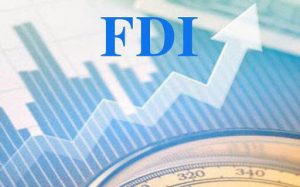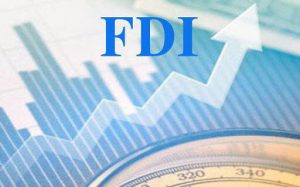How Vietnam Contained COVID-19 and Why its Economy Will Rebound

Vietnam has managed to contain COVID-19, lifting social isolation measures and reopening the economy, allowing businesses to resume by the government introducing incentives and financial assistance packages to spur economic growth.
While businesses have reopened, Vietnam remains vigilant with the government ready to meet challenges posed by the pandemic.
As schools and businesses reopened after the Reunification Day and International Labor Day Holiday, traffic congestion in major cities such as Hanoi and Ho Chi Minh City also returned to almost normal which is a striking contrast to several countries around the globe that are in lockdown in a bid to control the spread of COVID-19.
Vietnam lifted its social isolation measures at the end of April 22 but continues to take precautions by limiting the gathering of people and making face masks mandatory. The country has reported 355 cases of COVID-19 as of June 29 with no deaths as yet. Vietnam has managed to achieve this feat by aggressive contact tracing, testing, mass quarantining, timeliness, and the efficient mobilization of state agencies.
After recording its first two cases on January 28 on flights from China, Vietnamese government took rapid action as per its experience in dealing with SARS in 2003 and suspended all flights from mainland China on February 1 followed by all international flights on March 25. Visas and visitors were also stopped to contain the spread of the pandemic.
With other countries including Singapore and Malaysia reporting cases in the thousands and continuing various forms of lockdowns, Vietnam has done well to weather the storm compared to its peers and other developed nations.

COVID-19 hits economy hard but economy resilient
Nevertheless, like other countries hit by COVID-19, Vietnam’s economy has also suffered significantly over the course of the outbreak. It’s GDP fell to 3.8 percent in the first quarter of 2020, as compared to 6.8 percent in the same period in 2019 as per the General Statistics Office of Vietnam (GSO). In the first three months of the year, almost 35,000 businesses went bankrupt – the first time in decades the number of companies shutting down was higher than newly registered businesses. It has also cost nearly five million Vietnamese workers to lose their jobs as of mid-April, bringing Q1 employment figures to a 10-year low and up to 10.3 million workers could be impacted either by losing jobs or seeing their incomes decline in the second quarter. {(Source) 10 million Vietnamese workers affected with 5 million lost jobs due to Covid-19}

Among affected employees, 59 percent are temporarily out of work, 28 percent are taking turns to work, and the remaining 13 percent have lost their jobs.

In April, VCCI conducted a rapid assessment with 700 enterprises and business associations from 46 provinces/cities across the country. The survey sample includes a large number of enterprises in manufacturing (including in garment, footwear, electronics); wholesale, retail and repairing; transportation and warehousing; accommodation and food services; supporting service; education and training; agriculture – forestry and fisheries; construction; finance; health etc.. These are industries greatly affected by the Covid-19 pandemic. The sample was structured as follows: more than 8% are state-owned enterprises (SOEs), about 71% are domestic private enterprises (DPEs) and more than 20% are foreign-invested enterprises (FDIEs). The composition of the survey sample includes all sizes of enterprises in terms of employment, from small, medium to large enterprises. Among them, the group of enterprises with more than 500 employees accounts for 25.57% and the ones with fewer than 10 employees account for 10.51%.
Despite all this slow down the International Monetary Fund (IMF) has projected that the economy will expand to only 2.7 percent this year.
However, the Asian Development Bank (ADB) has forecast Vietnam to be one of the fastest-growing economies in Southeast Asia despite the impact of COVID-19. In its Asian Development Outlook report 2020, it reiterated the country’s economy will bounce back to 6.8 percent in 2021, provided the pandemic is contained.
To help recover the economy, the government has launched a US$10.8 billion credit support package, lowered interest rates, delayed the payment of taxes and land use fees for several business lines. It has further issued financial assistance for employers and employees affected by the pandemic.
The World Bank has further stated that Vietnam’s economy remains resilient and in its report titled East Asia and Pacific in the Time of COVID-19 reiterated that Vietnam benefits from the numerous free trade agreements (FTAs) with labor market conditions favorable.
In this context, we look at Four key industries important to Vietnam’s economy that are forecast to make a strong comeback given Vietnam’s strong market fundamentals and an economy.
Tourism
Vietnam’s tourism industry has been significantly affected by the pandemic.
However, while the situation is unprecedented, tourism is expected to rebound faster and stronger. For example, during Vietnam’s holiday weekend from April 30 to May 3, domestic tourism to areas such as Da Lat, Vung Tau, and Mui Ne increased with traffic choked on roads leading out of Hanoi and Ho Chi Minh City. Hotel occupancies were also higher with some transport operators fined for not maintaining social distancing guidelines inside coaches.
In addition, Vietnam relies heavily on Chinese and South Korean tourists, which accounted for 56 percent of its international arrivals in 2019. This also presents an opportunity, as China and South Korea have largely contained the pandemic. Once international flights resume, it is likely that international arrivals from these countries would first start, helping tourism to recover.
Digital and e-commerce services
The pandemic is pushing digital transformation in Vietnam. Banks have slashed online transaction fees to encourage cashless payment, while online grocery shopping and food delivery services jumped in demand. Retailers in Vietnam reported that orders by phone and apps increased tenfold compared to normal days. This allowed retailers to hire more delivery personnel to meet demand. Online shopping also ensures that while there is a dip in consumption, there will always be a demand for products, allowing businesses to operate.
In addition, when schools and universities were closed from the Lunar New Year holiday, they were forced to use online tools and classrooms. This increased the demand for hardware such as laptops and tablets and software services such as Zoom. Experts forecast that online delivery courses will remain prevalent even after the pandemic as attitudes toward e-learning change. Vietnam’s e-commerce industry is still growing but opportunities due to the pandemic have accelerated this shift.
Manufacturing and supply chains
The pandemic forced 15 percent of manufacturing companies to cut production, with garment and textile industries hit the hardest, directly impacting 2.8 million workers. Manufacturing operators complained of the lack of raw materials for production. Automobile manufacturers such as Toyota, Honda, Hyundai, Ford, and Nissan also temporarily suspended production due to a lack of spare parts and demand. Samsung even flew spare parts and components because of border restrictions during the pandemic.
This made companies have to re-think on their manufacturing and supply chains. Companies will have to diversify their input sources and look at new business lines. Businesses manufacturing in Vietnam are already looking at South Korea, Japan, and India for raw inputs.
Aviation
Vietnamese airlines have reported that the initial damage due to the pandemic is estimated to be US$1.3 billion. Around 10,000 employees of Vietnam Airlines itself had to take unpaid leave or around 50 percent of its staff. During social distancing measures, airlines operated a bare minimum of flights in accordance with local guidelines. The Ministry of Transport has proposed to cut several taxes and fees for the aviation industry including a reduction in landing and take-off fees and jet fuel.

Nevertheless, once the social distancing measures were lifted, the number of flights on the busy Hanoi-Ho Chi Minh City increased to 26 from the previous 1, with airlines gradually increasing the frequency of flights on domestic routes and Vietnam’s aviation market is expected to be one of the fastest-growing aviation markets in the world with major airports reaching capacity. The government knows that the long term growth of the industry is sustainable and has continued working on airport projects such as the Long Thanh Airport, which will replace the present airport in Ho Chi Minh City by 2025.
Investors can, therefore, be assured that while Vietnam has opened up its economy, it continues to remain vigilant and ready to meet the challenges posed by COVID-19. The Economist notes that COVID-19 affects emerging economies in at least three ways: locking down their populations, damaging export earnings, and deterring foreign capital. Vietnam has already addressed the first one and remains on course to address the rest.
HOW GPO CAN ASSIST
We at GPO can assist you by hiring and managing an freelancer market researcher and if everything goes as per your expectations we can introduce an business legal partner for getting your business registered in Vietnam and then offer our core service of been your HR business partner in Managing your daily HR activities, as we are an HR business consultancy firm in Vietnam. So, please do share your contact details with us by clicking on this link http://hroutsourcing.gpo.vn/
Top
















